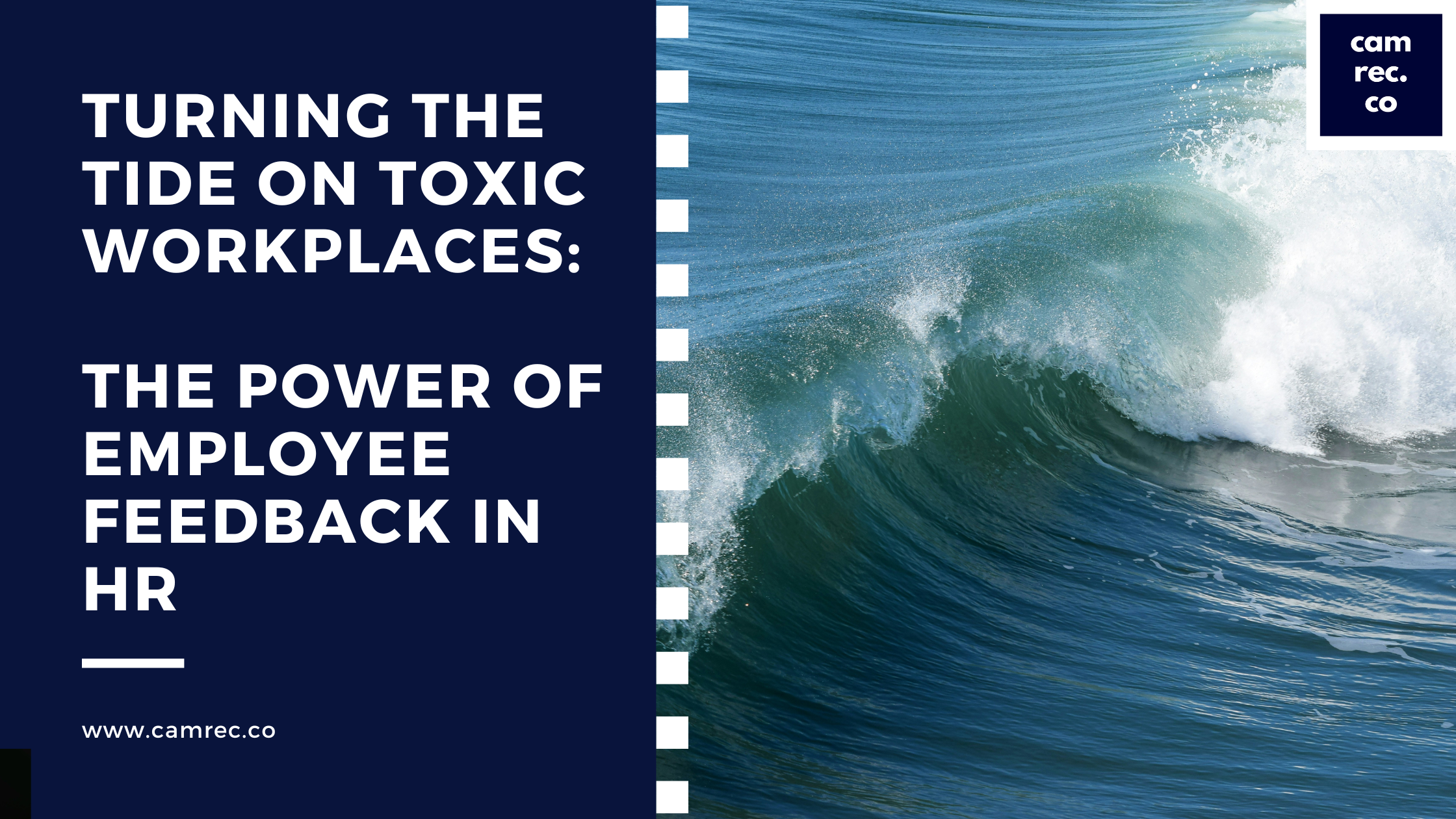Turning the Tide on Toxic Workplaces
Creating a positive and thriving workplace culture is essential, not just for employee wellbeing, but for the overall success of any business. However, the rise of toxic workplaces in many organisations is becoming increasingly apparent. Toxicity doesn’t always manifest in overtly harmful behaviour but can show up in more subtle ways—poor communication, a lack of support, or a disregard for employee opinions. These negative factors can lead to high turnover, disengagement, and, ultimately, decreased productivity.
As an HR professional or business leader, it’s your responsibility to understand the impact of a toxic environment and take steps to prevent it. One powerful tool in this process is amplifying employee voices. When employees feel heard and valued, they’re more likely to engage, collaborate, and contribute positively to the company’s goals. Let’s explore how HR can take proactive steps to address toxicity and create a more supportive and inclusive workplace.
Understanding Toxicity in the Workplace
Toxic work environments don’t develop overnight. Often, they start small—a shift in company culture, a subtle breakdown in communication, or a lack of focus on employee wellbeing. Over time, these issues snowball, creating a workplace where negativity festers. Employees may start to feel undervalued or ignored, leading to resentment, burnout, and a loss of trust in leadership.
A toxic environment can have far-reaching consequences, not just for those directly affected, but for the overall morale of the entire team. For example, the effects can be seen in decreased motivation, a lack of collaboration, and an increase in absenteeism. But these issues are preventable, and HR plays a key role in stopping toxicity before it becomes ingrained in the organisation.
The Role of HR in Amplifying Employee Voices
One of the most effective ways HR can address a toxic workplace is by amplifying employee voices. When employees feel like their opinions are heard and considered, they are more likely to feel valued, respected, and motivated to contribute to the company’s success. But how do we go about amplifying these voices?
- Encourage Open Communication – Communication is the foundation of any strong relationship, and it’s no different in the workplace. HR professionals should create channels where employees feel comfortable voicing their concerns, suggestions, and feedback. Regular surveys, feedback sessions, or one-on-one meetings are excellent ways to ensure employees feel heard. It’s crucial that these channels feel safe and confidential, so employees can speak freely without fear of retaliation or being dismissed.
- Listen Actively – Listening isn’t just about hearing what someone is saying—it’s about understanding and responding to their concerns. HR professionals should approach these conversations with empathy, demonstrating that they value the employee’s perspective. It’s essential to not only ask for feedback but also to act on it where possible. This creates a cycle of trust and demonstrates that employee voices matter.
- Implement Employee-Led Initiatives – Another way to amplify employee voices is to involve them in shaping company policies and initiatives. Encourage employees to participate in workplace improvement projects, diversity and inclusion programmes, or even sustainability efforts. By giving employees ownership of these initiatives, you empower them to make tangible changes in the workplace. This not only combats toxicity but also fosters a sense of belonging and purpose.
- Support Wellbeing – HR should take a proactive role in supporting the mental and physical well-being of employees. Toxic work environments often stem from neglecting employee wellness. Offering wellbeing programmes, access to mental health resources, and flexible working options are just some ways HR can make a real difference. When employees feel supported, they are more likely to speak up when things aren’t right, helping to address issues before they escalate.
Addressing the Root Causes of Toxicity
While amplifying employee voices is crucial, it’s also important to look at the root causes of toxicity within the workplace. Sometimes, toxicity is the result of systemic issues that go beyond individual behaviour. For example, poorly designed processes, unclear expectations, or lack of training can contribute to an environment of confusion and frustration.
HR needs to address these structural problems, which may involve revisiting company policies, revising job descriptions, or providing more support to managers. It’s also critical to have a clear, fair system for dealing with complaints or grievances, ensuring that employees know their concerns will be handled appropriately and consistently.
Leadership’s Role in Supporting HR Efforts
HR can’t tackle toxic work environments alone. Business leaders must also play an active role in supporting these efforts. Leaders set the tone for company culture, and their actions (or inaction) can directly influence the workplace atmosphere. When leadership models transparency, open communication, and empathy, it sends a clear message to employees that their voices truly matter.
It’s also essential for leaders to take responsibility for their actions and lead by example. If leaders are dismissive of employee concerns or fail to address toxic behaviours, it becomes much harder for HR to make any significant changes. Leaders should commit to continuous learning and growth, engaging in conversations with HR about how to improve workplace culture and better support their teams.
Creating a Culture of Trust and Respect
Ultimately, the goal is to create a culture where trust and respect thrive. When employees feel their voices are valued and they are supported in their roles, they’re more likely to be engaged, motivated, and productive. HR plays a crucial part in building this culture, but it requires a concerted effort from everyone in the organisation, from leadership to every employee.
By actively listening, implementing employee-led initiatives, and addressing the root causes of toxicity, HR can make a real difference in transforming the workplace. It’s not always easy, but the results—healthier, more engaged employees and a thriving business—are well worth the effort.
Thank you for visiting our Cambridge Recruitment blog!
Join us on LinkedIn
Follow us on Instagram
More about The HR Guys

